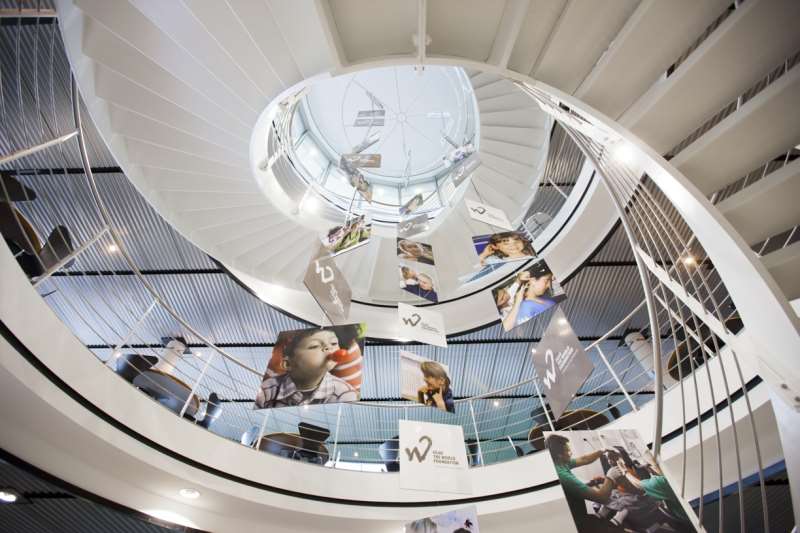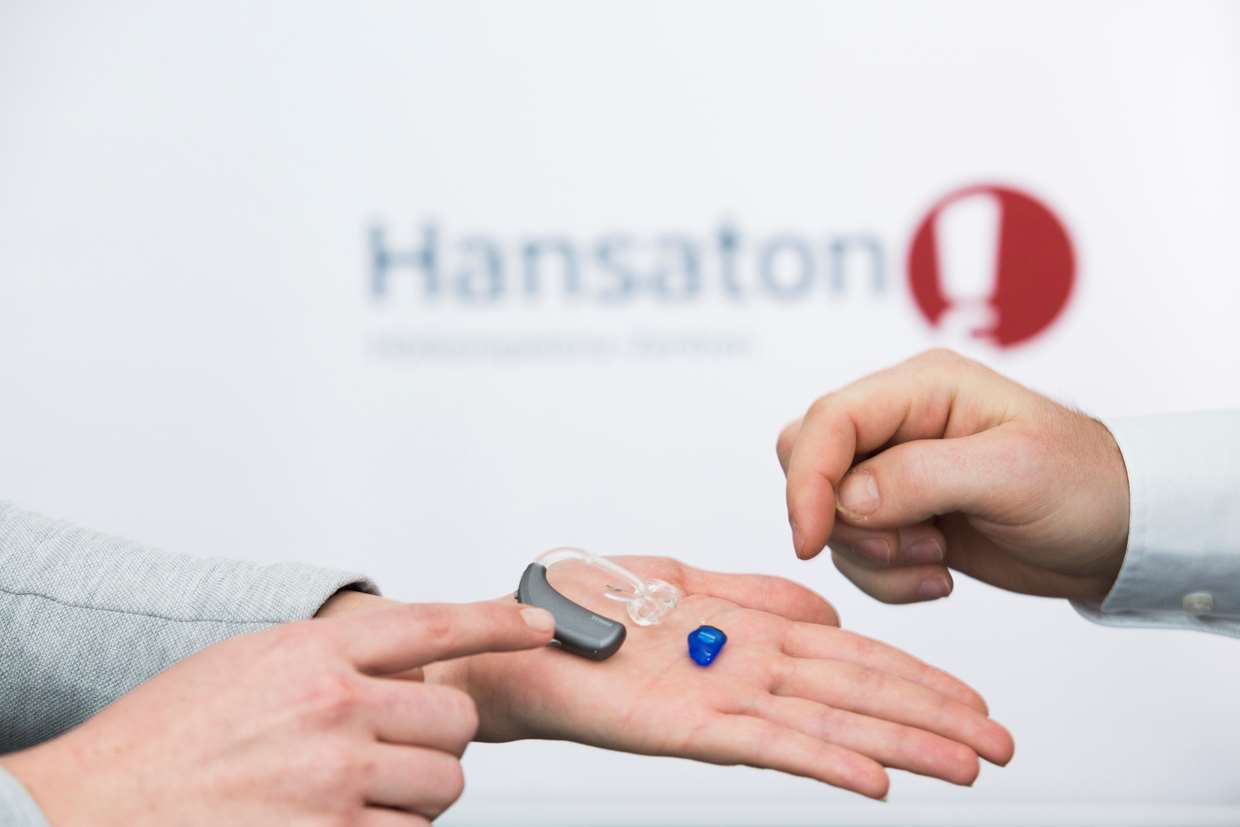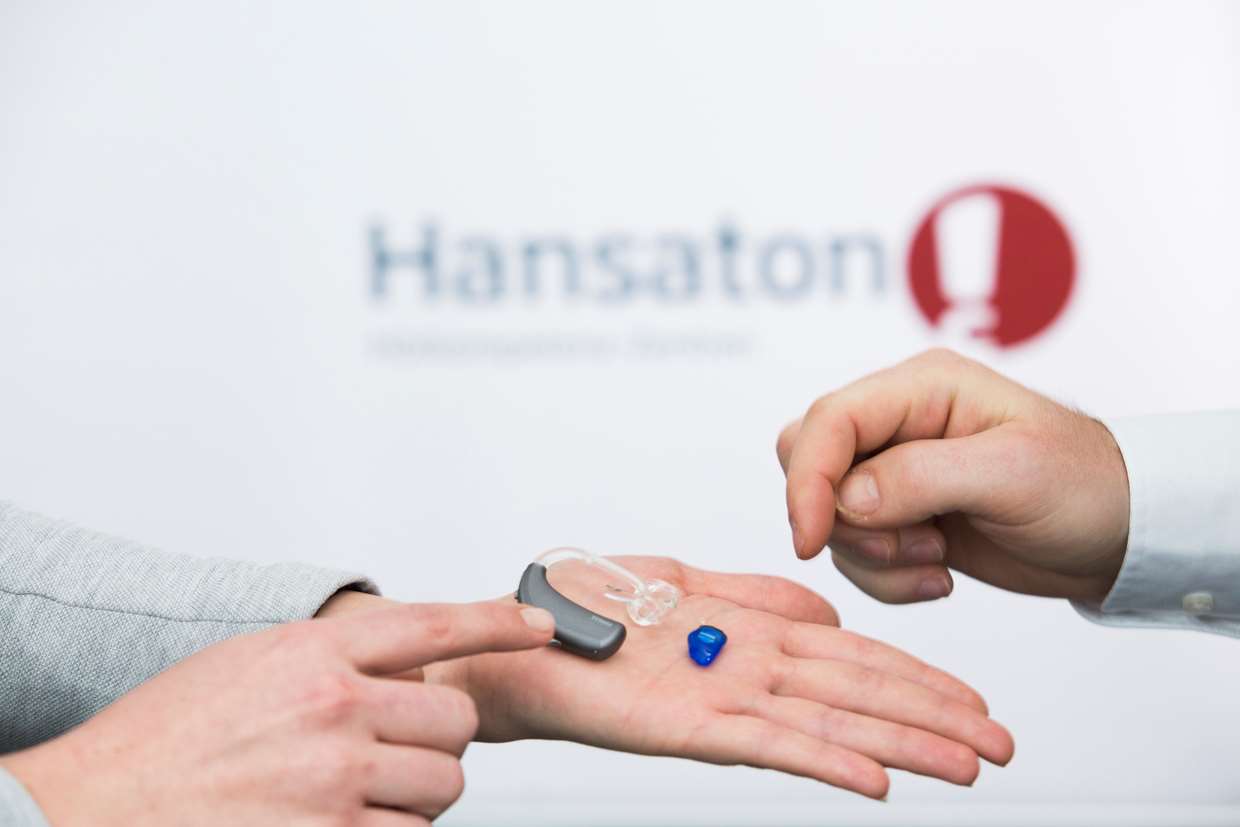Feature story
Scaling the heights of innovation
Switzerland & Austria
Facts & figures:
Area:
Switzerland: 41,285 km2
Austria: 83,879 km2
Population:
Switzerland: 8.48 million (2017)
Austria: 8.82 million (2018)
GDP:
Switzerland:
CHF 659 billion (2016)
Growth: +1.0% (2017)
Per capita: CHF 78,700 (2016)
Austria:
EUR 369 billion (2017)
Growth: +2.9% (2017)
Per capita: EUR 37,826 (2017)
“If you want to be good, you’ve got to start young,” says the legendary Swiss national hero in Schiller’s famous play Wilhelm Tell – and the pursuit of progress and excellence expressed in this truism certainly has a long tradition in both Switzerland and Austria. These two alpine countries enjoy a close relationship and are among the global leaders in innovative hearing care. Customers in these markets value high standards of service and technological development – Sonova’s strongest suits.
Both countries’ hearing aid markets have seen steady expansion over the last five years, with Switzerland averaging double-digit growth and Austria’s most recent figures pointing to single-digit growth.
Up to a million people in Switzerland have an acute or chronic hearing condition, but only a third of those affected by hearing loss wear a hearing aid. Some 70,000 hearing instruments are sold in Switzerland every year; while there are no official figures for Austria, it has been estimated that about 80,000 devices were purchased in 2017. In Austria, some 1.6 million people – about a fifth of the population – are classified as affected by hearing loss. Depending on the degree of the customer’s hearing loss, hearing aid purchases are subsidized by health insurance providers, with a minimum entitlement of EUR 750 per ear. Customers in Switzerland are entitled to receive a contribution from their old-age, survivors or disability insurance, although any such claim must be assessed and authorized by an ear, nose and throat physician.
The number of senior citizens living in both countries has been rising constantly and the proportion of residents aged over 65 is set to increase by more than 30% by 2025; by 2035, it will have risen by more than 50%. This means there will be 400,000 more pensioners over the next ten years. In Austria, the number of over-65s is even expected to increase by more than 40% by 2030. About a third of this cohort is likely to be affected by hearing loss of some kind, so the need for hearing solutions will rise significantly in both countries. These demographic changes suggest a potential 15,000 new customers annually in Switzerland alone.
Given this backdrop – and the fact that many affected by hearing loss are still relatively uninformed about the whole topic of hearing aids – Sonova’s strategy focuses on raising awareness and encouraging people to seek professional support as soon as possible rather than waiting up to seven years (the current average). If a hearing instrument is fitted too late, a decline in cognitive capacity sets in and the hearing ability that is lost over this time has to be laboriously reacquired through training.
The supply infrastructure in both Austria and Switzerland is extremely well-developed, with some three quarters of the Austrian market covered by large audiology networks and the remainder being served by independent hearing care professionals. Switzerland has a similarly large proportion of service and retail networks supplying half the market. The remaining providers are individual stores run by independent audiologists, some of whom belong to buying groups. Sonova is committed to close partnerships with hearing care professionals in both countries. In addition, the Group is well represented in Austria through its own network of specialist audiology stores.
“We’ve tailored our global service, support and sales presence to local needs and circumstances; this has been an important factor in our success,” explains Arnd Kaldowski, who leads Sonova’s worldwide operations as CEO since April 1, 2018. “Our customers in Austria and Switzerland really appreciate how we are continuously refining our technologies and can provide the best possible solution for every kind of hearing loss thanks to our innovative range of products.” Sonova is thus extremely well positioned in both countries and leads the market with firmly established brands.
Sonova is headquartered in Switzerland. The company’s airy head office on the eastern shores of Lake Zurich is inspired by the campus model. Arnd Kaldowski explains the thinking behind the design: “Innovation flourishes where corporate culture makes room for creativity.” The architecture, with its broad expanses of glass and light, reflects this approach; an elegant stairwell shaped like a cochlea links the floors to form a single open-plan office, ensuring a dynamic atmosphere that leaves plenty of space for fresh ideas.


More than 1,000 employees work at the Stäfa site, and global research and development is managed from here. It is also the site of one of Sonova’s manufacturing and technology centers, where strategically important core components for hearing solutions are produced and finished. The two other sites in Switzerland are the head offices of the Group’s global retail business in Steinhausen and Phonak Communications AG for wireless communication systems in Murten. In Austria, Sonova has clustered its hearing solution expertise in two locations: Sonova Österreich GmbH, the local wholesale company, is based in Linz, while the headquarters of Sonova’s retail business (along with its local brand, Hansaton) is in Wals, near Salzburg.
Both at its global headquarters, and in its Group companies, Sonova is successfully implementing its strategy of achieving synergies and cost efficiencies through close cooperation between its individual brands. These streamlining efforts range from purchasing, logistics, and IT collaborations to accounting, controlling, and HR projects.
Sonova has been a byword for exceptional innovation, research, and manufacturing in the field of hearing solutions since its foundation in Switzerland in 1947. The company unites highly qualified, talented individuals and strong brands and has one of the widest ranges of pioneering products and services in the sector.
2018 marked Joe Itin’s 38th year at Sonova’s headquarters in Stäfa, making him one of the company’s longest-serving employees. Now 63, he has witnessed much of the rapid development the firm has undergone. Itin began his career in hearing aid development before becoming Director of the Corporate Quality Management department. “When I started, there were 80 employees in total and it still felt very informal – like a large family,” he recalls. “Nowadays, you no longer know everyone, but the corporate culture is still unusually open.” Itin has made enduring friendships within the company and enjoys spending his spare time with his colleagues – on a work outing to the annual “Phonak Velotag” cycling event, for example. Like many of his colleagues, he is extremely appreciative of the wide range of sports on offer at headquarters. Sonova has run a preventive healthcare program for many years. Sports and exercise, yoga and relaxation, a healthy, balanced diet and regular medical check-ups ensure a healthy work environment and high levels of staff satisfaction. “One thing has remained constant in all the years I’ve worked here: people at Sonova put their heart and soul into their work,” says Joe Itin.
Numerous audiologists in Switzerland have also enjoyed close ties with Sonova and its Phonak brand over many years. One of these is Christoph Schwob from Basel, who has run his specialist audiology store Hörberatung Basel for more than 30 years. 54-year-old Schwob has been working with the Phonak brand for his entire professional career. “Phonak and I are a good fit,” he says. Schwob specialized early in pediatric audiology. Phonak has decades of experience in this field and offers countless pioneering and easy-to-use products that have been specially designed for the hearing needs of children.
Phonak’s hearing instruments are very popular on the Swiss and Austrian markets, where the company launched a range of innovative technologies and solutions in August 2017. The rechargeable Audéo™ B-R hearing aid, the Phonak Virto™ B-Titanium In-The-Ear with its titanium shell, and the Audéo™ B-Direct hearing instrument, which allows the wearer to connect directly to most Bluetooth-enabled cellphones without the need for an extra body-worn streaming device, have proved especially popular. The Phonak Audéo™ B-Direct hearing aid is the first device to feature the newly developed Made For All 2.4 GHz wireless chip, making truly hands-free calling possible. The new device also simplifies wearers’ lives with its superb TV sound quality. The TV connector, the new plug-and-play solution, easily connects and delivers TV audio streaming to multiple Audéo™ B-Direct wearers simultaneously. This essentially turns a person’s hearing aids into wireless TV headphones.
Future generations of hearing aids with an even greater range of wireless functions will also be able to make use of this revolutionary chip technology, which is known as SWORD™ (Sonova Wireless One Radio Digital). The market potential is considerable: “We’ve had a lot of positive feedback from our customers that suggests they really appreciate the direct connectivity offered by our solution,” says Luca Mastroberardino, Sonova’s Managing Director for Switzerland. “The Audéo B-Direct hearing aid is only the beginning.”
Sonova’s Unitron hearing aid brand is well positioned in both alpine countries, too. The flexibility and adaptability offered by its Flex:trial™ technology, a feature allowing audiologists to upload the software for the required technology level themselves, is in high demand and proving extremely popular; many customers are keen to test devices before purchase. Unitron’s excellent product design has also boosted sales in both markets. The Moxi Now™ hearing aid received the top prize for product design from the internationally esteemed Red Dot organization in April 2017.
Sonova’s Advanced Bionics brand likewise enjoys a strong market position and is well represented in leading cochlear implant clinics. “Advanced Bionics cooperates closely with a wide range of clinics, including the University Hospital Zurich and University Hospital Salzburg, on joint research studies,” explains Hansjürg Emch, Group Vice President Cochlear Implants. Zurich’s Prof. Dr. Alexander Huber, the head of the Cochlear Implant Center, and Dr. Dorothe Veraguth, the physician responsible for audiology, have taken a leading role in testing new approaches and methodologies in the field of cochlear implantation; the techniques they are researching include new acoustic pre-processing strategies and a method of measuring a patient’s usable residual hearing in real time during electrode insertion. These innovations are currently possible only with technologies developed by Advanced Bionics and Phonak.
Phonak’s Naída™ Link hearing aids and the Phonak Naída™ Link CROS, which was introduced in 2017, were specially developed for Advanced Bionics. They ensure that users who have a cochlear implant on one ear always have a suitable hearing solution for the other, as both of these Phonak devices can communicate directly with the Advanced Bionics sound processor. Even users who opted for an Advanced Bionics cochlear implant more than 15 years ago can now make unrestricted use of this advanced technology. Thanks to the partnership between Advanced Bionics and Hansaton1, Sonova’s local retail brand, customers in Austria can also seek advice about cochlear implants in the latter’s specialist audiology stores, ensuring that people with hearing loss receive comprehensive care.
Sonova aims to further expand its retail business, not least in Austria. This will be accomplished via Hansaton, its local brand and part of Sonova’s international retail network, which has been thriving in Austria for more than five decades. As one of the leading suppliers of hearing solutions, Hansaton currently operates more than 95 specialist audiology stores across the country. Hansaton’s business is supported by successful marketing campaigns designed to engage with new target demographics on the Austrian market. “We’re determined to achieve further growth in Austria with Hansaton, and our strategy here will involve opening additional specialist stores and expanding the range of advice and services offered by our hearing care professionals – which is already one of the best in the country,” explains Hansaton’s Managing Director Ursula Rumplmayr. The key element here is hands-on training of employees; Hansaton has enjoyed consistent success over several years by recruiting people looking for a career change and training them as audiologists under the adult education system in Austria.


Jason Brügger’s story movingly illustrates just how important Sonova’s hearing solutions can be for people affected by hearing loss: suspended high in the air beneath the blue big top of the Swiss National Circus Knie, the young aerialist swoops like an angel with long white-feathered wings. The audience watches with bated breath – it is this act, in which Brügger recounts the ancient tale of Icarus, that won him the fourth season of the casting show “Switzerland’s Got Talent” in 2016. The tour with Circus Knie came a year later, at the age of 24, fulfilling a life-long dream. As a young boy in Basel Brügger had appeared in a children’s circus, and he travelled to Canada at the age of 18, straight after graduating from high school, to undergo further training at the acclaimed National Circus School in Montreal. But then came a severe infection of his right inner ear, accompanied by hearing loss, tinnitus, and bouts of vertigo; the same condition spread to his left ear soon after. “The doctors advised me against becoming a circus artist as I had real difficulties with my balance,” he recalls.
The hearing aids from Sonova brand Phonak that he has been wearing since 2015 helped him to achieve his dream, however. “I’ll never forget the moment I first put on my hearing aids – a whole world opened up to me again, and I became part of it once more.” Way up high, close to the top of the circus tent, the laws of gravity seem not to apply to him. “I can hear the music and the crowd now.” The young artist goes on to explain that he had previously missed all of that and had felt like he was in a pot with the lid on.
Jason Brügger is proud of his acrobatic achievements: “I certainly hope that I can encourage other people to believe in themselves with my story. Even if you’ve been told something is beyond you for whatever reason, you should believe in yourself anyway, and fight for your dreams – there’s always a way to achieve what you want to do.”
- Sonova operates its local retail business under several market-specific brands, including Hansaton in Austria, which joined the Group in 2001. It should not be confused with the hearing aid brand of the same name, headquartered in Germany, which has been part of Sonova since 2015.

